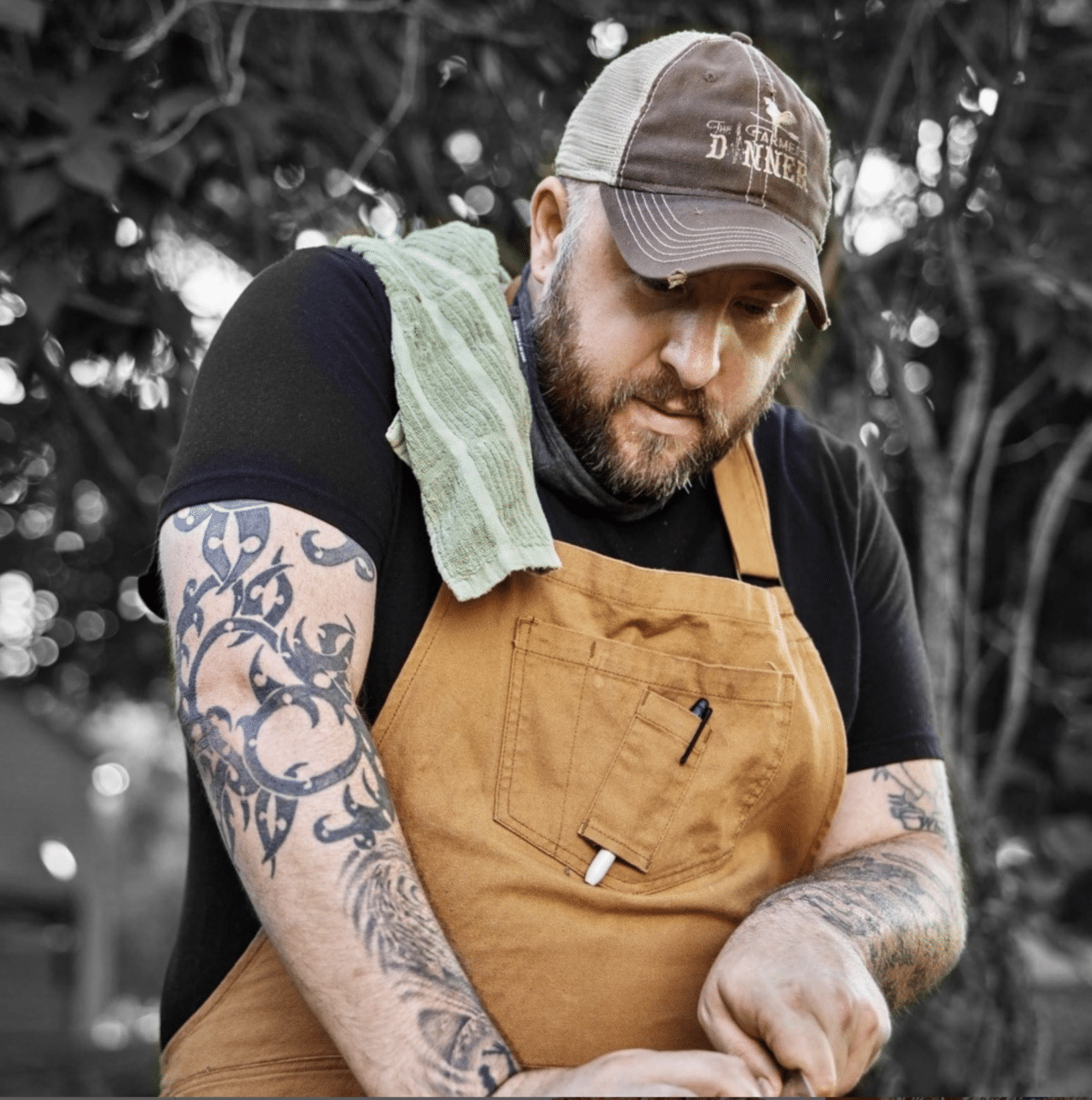For a chef, losing your knives is like losing a piece of your soul.
This is a story about cherished tools, carbon steel knives, lost and found.
Seven years ago, someone broke into my car and stole my knives. To most people, that might seem like an inconvenience in a long list of little annoyances. But for a chef, losing your knives is like losing a piece of your soul. It’s the equivalent of a musician having their instrument stolen or a writer losing their manuscripts. These were not ordinary knives; they were my reliable allies, each carrying a memory, a narrative, or a lesson learned.
I’m a chef with more than 20 years of expertise in the industry. I’m the author of six books and launched the Farmer’s Dinner and Aatma restaurant. I’ve dedicated my entire life to perfecting my trade, and in the process, I’ve gathered a collection of knives that are more than simple tools; each one is special and one-of-a-kind.

The best of two worlds
Recently, I decided to add to my collection after reflecting on the day my knives were stolen. I purchased the Shun Narukami with BLUE II steel and finally replaced the Shun Classic Boning knife. Shun understands the allure of carbon steel and the practicality of stainless steel. Their Narukami knives with BLUE II steel offer the best of both worlds. By jacketing the knife in stainless steel, Shun has reduced the maintenance needed to keep it looking shiny. The cutting edge, however, is pure carbon steel, allowing it to develop that cherished patina over time.
This combination offers carbon steel’s sharpness and edge retention with the beauty of low-maintenance stainless steel. It’s a perfect blend for both professional chefs and home cooks who want the performance of a carbon steel knife without the intensive care routine.
Steel and memory
Many years ago, when I was working as a line cook, a mentor of mine gave me my very first Shun boning knife after watching me hack my way through a chicken. With that knife, I learned the nuances of butchery, the precision required to separate muscle from bone, and the finesse needed to ensure every cut was perfect. It was always reliable and always sharp.
Losing that knife felt like losing a friend. Each time I held it, I could feel the lessons it taught and the genuine act of kindness it bestowed. Losing this knife felt like a loss of this memory.
I thought long and hard about what I wanted to say about the theft of my knives to my friends on social media. I didn’t want donations to replace my knives; I wanted to turn this situation into something positive. If people felt compelled to help, I asked them to donate to “No Kid Hungry,” a fantastic organization that feeds food-insecure youth. The outpouring of support was tremendous; we raised several thousand dollars that day.
What made that boning knife a staple in my arsenal special wasn’t just the sentimental value.
It was the quality of the blade. Carbon steel, the gold standard for professional chefs and enthusiasts, sets a knife apart.
If you take cooking seriously, carbon steel is your choice. Unlike stainless steel, which is more forgiving and resistant to rust and corrosion, carbon steel requires more care. It rusts and stains easily, and with prolonged exposure, the blade can react with certain foods and darken in color. But for those who treat their knives with the respect they deserve, this is not a problem.

What made that boning knife a staple in my arsenal special wasn’t just the sentimental value.
It was the quality of the blade. Carbon steel, the gold standard for professional chefs and enthusiasts, sets a knife apart.
If you take cooking seriously, carbon steel is your choice. Unlike stainless steel, which is more forgiving and resistant to rust and corrosion, carbon steel requires more care. It rusts and stains easily, and with prolonged exposure, the blade can react with certain foods and darken in color. But for those who treat their knives with the respect they deserve, this is not a problem.
There’s a trade-off, though, and it’s one that any dedicated cook will appreciate. Carbon steel stays sharper longer than stainless steel. It’s harder and holds its edge better, making it easier to sharpen. Over time, carbon steel develops a patina, a unique coloration that tells the story of meals cooked and memories made. This patina isn’t just ornamental; it’s a badge of honor.
Over time, carbon steel develops a patina, a unique coloration that tells the story of meals cooked and memories made.
Poetry and ritual
Each knife has its character and its feel. The balance, the weight, the sharpness—all of these factors combine to create something almost alive. When you find the right knife, you know it. It just feels “right.” Chefs have been known to wax poetically for hours about the knives we love.
For those unfamiliar with the nuances of knife care, carbon steel might seem daunting. Yes, it requires more attention than stainless steel, but the reward is much more. You can’t toss a carbon steel knife in the dishwasher or leave it wet. It demands respect. After each use, it must be washed, dried, and occasionally oiled to prevent rust. This ritual holds the chef accountable, or you will have a rusty, dull blade. As with most things in the kitchen, being organized and prepared are essential.
Unknown content block type: FlexiblePageTemplateFlexibleContentPhotoFullWidthLayout
{
"__typename": "FlexiblePageTemplateFlexibleContentPhotoFullWidthLayout"
}The journey
Every time I pick up a knife from my kit, I’m reminded of the story it represents. Each knife carries a history from the forge where it was crafted to the kitchens where it was used. The Shun boning knife stolen from me was a part of my culinary education. It saw countless hours of work, endless practice, and the creation of dishes that brought joy to many.
Losing it felt like losing a part of myself. But in that loss, I found a renewed appreciation for the tools of my trade and learned that we can create gain for others through loss. I realized that while the physical knife was gone, the skills and memories it helped create were still with me, and in the end, that’s what truly matters.
Home cooks and chefs
Whether you’re a professional chef or a passionate home cook, the right knife makes all the difference. It’s not just about having a sharp blade but a tool that feels right in your hand, which you can trust to perform perfectly every time. The care you put into maintaining your knives reflects the care you put into your cooking.
For those considering the leap to carbon steel, I encourage you to embrace the journey. It’s an investment in your craft that pays dividends in the kitchen. Take care of your knives, and they’ll take care of you. And remember, it’s not just about the knife itself but the stories and memories it helps you create.![]()
Take care of your knives, and they’ll take care of you.
In Partnership with Shun Cutlery.
